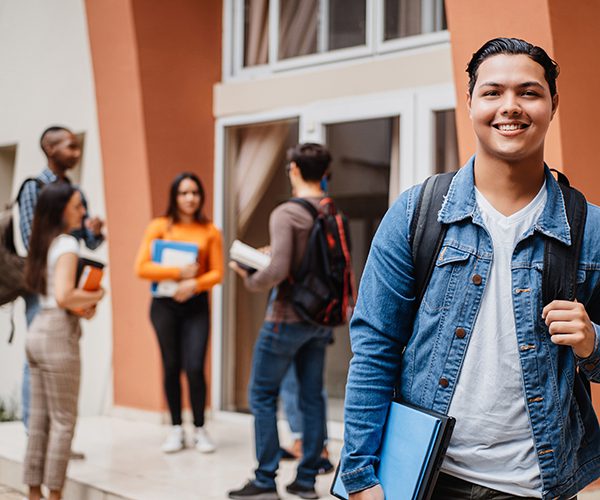In Ed Trust’s recent report, A Promise Fulfilled: A Framework for Equitable Free College Programs, we provide a policy framework for designing free college policies that benefit students who struggle the most to pay. By that definition, this should include undocumented students. However, given the current federal context, undocumented students are ineligible for federal student aid. And in some states, there is a mixed reception — with some providing In-State Resident Tuition (ISRT), while others charge undocumented students out-of-state tuition rates.
It is estimated that undocumented students make up 1.5 percent of all children enrolled in pre-kindergarten to fifth grade and 2.8 percent of students in grades six to 12. Approximately 65,000 undocumented students graduate from high school every year. And while this is significant, another estimated 11,000 to 13,000 undocumented students drop out of high school and never make it to graduation. Providing these students with a pathway to postsecondary education may not only increase access to college, but may in turn increase high school graduation rates. Increasing access for undocumented students is also a moral and economic imperative. Residents with higher levels of education pay more in taxes, spend more, and are more likely to invest in the U.S. economy. However, this growing group of students is not afforded equitable opportunities to access postsecondary education as their peers and are continuously being excluded from new investments in financial aid.
The research on undocumented students provides evidence that state policies can serve as an important signaling function on the value of obtaining a postsecondary education. Unfortunately, as undocumented students begin the transition to adulthood, they realize the costs and requirements to continue their education beyond high school. As such, they tend to view their status and postsecondary education as an uncertain and a distant reality and as something reserved for those with documented status, privilege, and wealth.
ISRT policies have been shown to have a positive effect on postsecondary access for undocumented students. Undocumented students residing in states with ISRT policies were more likely to enroll in college compared to undocumented students who live in states without ISRT.
So how accessible are the 15 active or authorized statewide free college programs to undocumented students? Well, only five states provide access for undocumented students:
- California’s College Promise Grant
- Oregon’s Promise Grant
- Washington’s College Bound Scholarship
- Delaware’s Student Excellent Equals Degrees
- Rhode Island’s Promise Scholarship
Two-thirds of enacted free college programs do not provide access for undocumented students. That’s because they are last-dollar programs that require completion of the Free Application for Federal Student Aid (FAFSA). So how were programs in states like California, Washington, and Oregon able to bypass the FAFSA and give undocumented students access to state aid?
California, Washington, and Oregon offer an alternative to the FAFSA: a state aid application that provides higher education institutions with the necessary information to distribute aid and gives undocumented students the necessary funding to continue their postsecondary education. Other approaches reiterated in Delaware and Rhode Island do not include a state aid application. Delaware’s approach is much more restrictive, allowing access only to Delaware Technical Community College. Whereas Rhode Island allows undocumented students to apply as long as they are eligible for in-state tuition. These states’ eligibility requirements do not differ much — most include a residency requirement, parental income, and completion of an affidavit indicating legal immigrant status.
Rhode Island’s approach is also evident in Maryland’s Community College Promise Program, authorized in May 2018 and Oklahoma’s Tuition Aid Grant, authorized in November 2007. In Oklahoma, undocumented students are considered for the award as long as they graduate from an Oklahoma high school, reside in Oklahoma for at least two years prior to graduation, satisfy admissions requirements, and provide a copy of a correct application or file with the United States Citizenship and Immigration Services (USCIS) to legalize the student’s immigration status. Maryland’s free college program, which goes into effect July 2019, functions as a last-dollar waitlist program. This scholarship converts to a loan if the student does not fulfill the following certain obligations, like maintaining employment in Maryland for at least one year for each year of scholarship awarded.
Creating obstacles to participation can create financial burdens for undocumented, low-income students that may result in the interruption of attending college Moreover, limiting access to a technical college is modern-day tracking for students who are already vulnerable. It is important to note that while undocumented students receive in-state tuition for the five programs mentioned, the documentation required for in-state residency can be extensive and may discourage eligible students from participating.
As free college programs advance, advocates should support the momentum, but also ensure that eligibility requirements are advancing equity and not limiting participation, which can detract from increasing college access for low-income recent high school graduates, first-generation college students, justice impacted students and undocumented students. If we as a nation don’t purposefully invest in the most vulnerable students, we are continuing to deny these students an opportunity to better their lives. The messaging of free college should perpetuate a just system that is inclusive of undocumented students, and cases like Washington, California, and Oregon can serve as a model.






